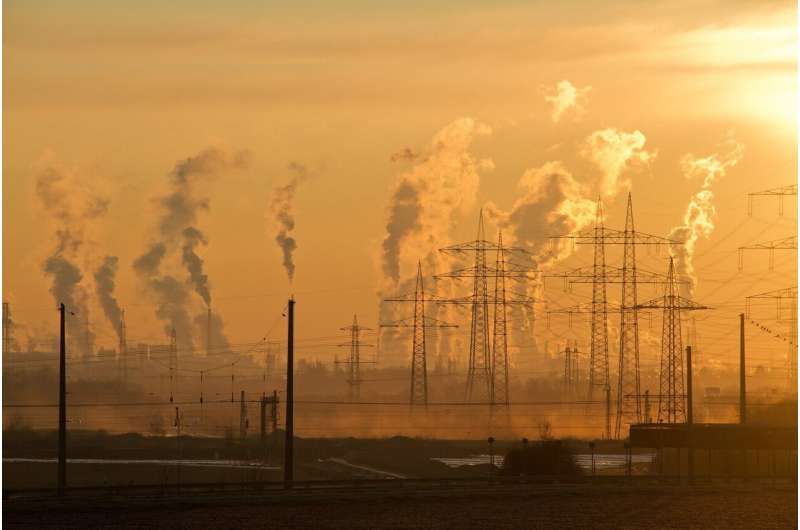EPA must use the best available science—by law—but what does that mean?

Science is essential as the U.S. Environmental Protection Agency carries out to protect human health and the environment.
In fact, require the EPA to use the "best available science" about regulations, permits, cleaning up contaminated sites and responding to emergencies.
For example, the requires the EPA to rely on science for setting emission standards and health-based air quality standards. The requires the EPA to consider the best available peer-reviewed science when setting health-based standards. The requires the agency to develop surface water quality criteria that reflect the latest science. The requires the EPA to use the best available science to assess risk of chemicals to human health and the environment.
But what exactly does "best available science" mean?
That's an important question as the Trump administration launches an clean air and water regulations at the same time it is preparing to and considering —the scientific research arm of the EPA.
What is best available science?
Some basic definitions for best available science can be found in laws, court rulings and other sources, including the EPA's own policies.
The science must be , , meaning it is not influenced by personal views. Best available science is the result of the . And it is and must be credible.
The EPA's includes "processes and practices to ensure that the best available science is presented to agency decision-makers and informs the agency's work." Those include processes to ensure and and procedures for outside of government.
I have seen the importance of these processes and procedures personally. In addition to being an who works on air pollution, I am a former member of the EPA's , former chair of the EPA's , and from 2022 to 2024 served as of the EPA's Office of Research and Development and the .
Advisory boards and in-house research
The plays an important role in ensuring that the EPA uses the best available science. It is tasked with .
The ordered EPA to establish the board. The Science Advisory Board's members must be " to evaluate scientific and technical information on matters referred to the Board." But those members can be replaced by new administrations, as the to do now.
During the first Trump administration, the EPA replaced several independent scientists on its advisory boards in a manner that deviated from established practice, according to the , and brought in . I was one of the independent scientists replaced, and I and others launched an independent review panel to continue to deliver expert advice.
No matter who serves on the EPA's advisory boards, the agency is required by law to follow the best available science. Failing to do so sets the stage for lawsuits.
The same law that established the Science Advisory Board is also a legal basis for the , the agency's scientific research arm and the EPA's primary source for for decision-makers.
During my time at the EPA, the Office of Research and Development's work informed regulatory decisions involving , , and . It informed , as well as and efforts in EPA's regions.
and also look to the EPA for expertise on the best available science, since they typically do not have resources to develop this science themselves.
Federal courts affirm using best available science
Federal courts have also ordered the EPA to use the best available science, and they have recognized the importance of reviews by external experts.
In 2024, for example, the U.S. Court of Appeals for the District of Columbia Circuit denied an industry petition to review an EPA standard involving ethylene oxide, a pollutant emitted by some chemical and industrial facilities that has been .
The court accorded an "" to the EPA's evaluation of scientific data within its area of expertise. The court listed key elements of the EPA's best available science, including "an extensive, eighteen-year process that began in 1998, involved rounds of public comment and peer review by EPA's Science Advisory Board ("SAB'), and concluded in 2016 when EPA issued a comprehensive report on the subject."
The District of Columbia Circuit in 2013 also affirmed the central role of science to inform revisions of , which set limits for six common air pollutants.
In that case, , the court noted that the EPA must receive advice from its , or CASAC. The court advised that, while the agency can deviate from the committee's scientific advice, "EPA must be precise in describing the basis for its disagreement with CASAC."
The Trump administration in 2025 all members of CASAC and said it planned to replace them.
What does this all mean?
Requiring the agency to use the best available science helps ensure that decisions are based on evidence, and that the reasoning behind them is the result of well-accepted scientific processes and free from biases, including or interference.
The scientific challenges facing the EPA are . Responding to them effectively for the health of the population and the environment requires expertise and robust scientific processes.
Provided by The Conversation
This article is republished from under a Creative Commons license. Read the .![]()



















